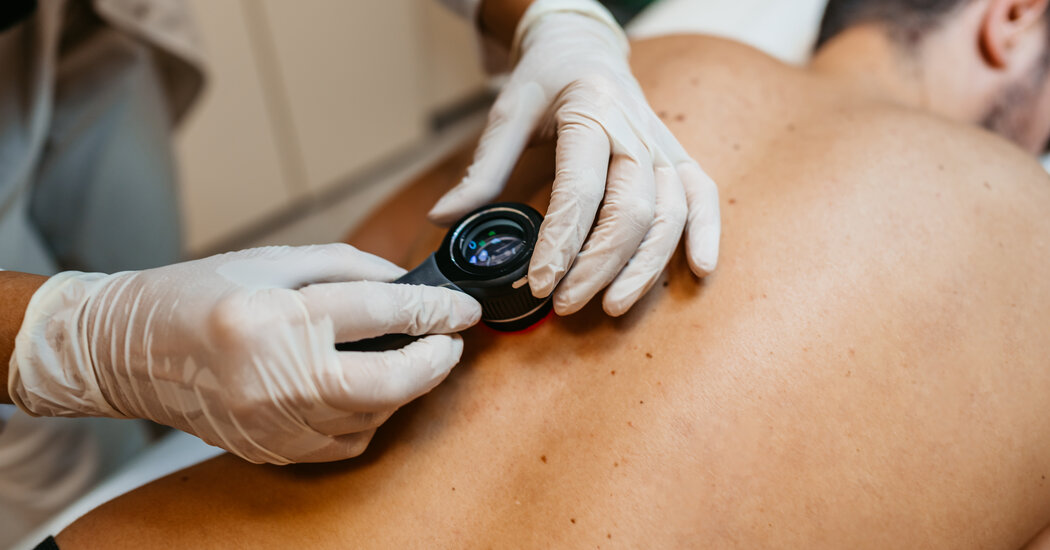We asked experts what to know about melanoma symptoms, treatment and prevention.
When spring turns to summer and warm weather lures more people outside, skin cancer may be at most a distant concern. But experts said it’s important to take the risk seriously.
The ultraviolet rays in sunlight are a leading risk factor for skin cancer, which will affect one in five Americans over their lifetime. That includes melanoma, among the deadliest types. About 100,000 people are diagnosed with melanoma each year in the United States, and about 8,000 die from it annually, according to the American Cancer Society.
Fortunately, there are simple ways to reduce your risk, and to detect possible cases early while they are most curable. Therapies approved over the past 15 years have also transformed the treatment of melanoma, extending and improving the lives of patients even with late-stage cases.
Here’s what to know about melanoma, its treatments and how to protect yourself.
What is melanoma?
Melanoma is a cancer that typically starts in skin cells known as melanocytes that make the skin’s pigment. Compared with more common skin cancers that begin in squamous or basal cells, melanoma is more likely to spread to other parts of the body.
“It truly has a very aggressive behavior and biology behind it,” said Dr. Michael Davies, chairman of the melanoma medical oncology department at the University of Texas MD Anderson Cancer Center.
Most melanomas appear as flat or slightly elevated blotches of dark color on skin that has been frequently exposed to ultraviolet light, such as the scalp and face, arms, back and legs (though they can occur on areas that have never been exposed to the sun, too). In a smaller share of cases, the growth may appear as a dark- or red-colored bump and grow down into the skin, which can make it more difficult to detect.
